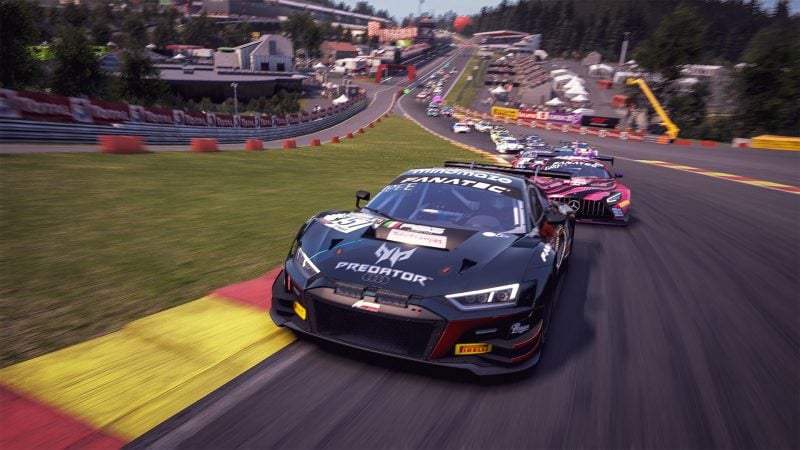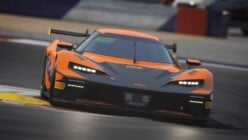
After a busy 2021 season which crowned six different champions, the GT World Challenge Esports series returns for 2022 with a slightly different format and a new Pro Driver ranking.
Once again the series will be broken into two events, matching the real GT World Challenge. There’ll be a Sprint Series, which will consist of short, hour-long races for individual drivers, and an endurance series which will again include the 24 Hours of Spa-Francorchamps as its flagship event.
However, while the Sprint Series will again be a continental championship, with five rounds each taking place for drivers in the Americas, Asia, and Europe, the endurance series will be a single unified event called the Intercontinental GT Challenge.

As with 2021, drivers will qualify individually for the Sprint Series and be selected by their teams for the endurance event, but there’s a slightly more complicated two-tier driver system in operation this season.
In essence, any driver who scored at least 15 points across both the Sprint and Endurance Series rounds in Asia or America, or 25 points in Europe, will be classed as a “Pro” driver this season, with other drivers classed as “Silver”. Pro drivers are subject to a higher entry fee — €250 per race compared to €100 — with a slightly higher share of the €120,000 total prize fund across the four series.
Just to add a little further complication, each eligible manufacturer can nominate individual drivers as Pros for the Sprint Series, and a minimum of two Pro drivers for every round for their cars in the IGTC endurance series. There’ll be a minimum requirement of three cars per manufacturer in total across the four series.

Drivers will need to qualify for the Sprint Series by setting times circuits in their region’s championship. Pro drivers will be required to set five-lap stints at two of the five circuits, while Silver drivers set hot laps at three of the five. The best 24 in each class in each region will then form the 48-car grid for the season.
There’s a similar process for the endurance event, but requires three drivers from each team to qualify, and the manufacturer-nominated teams need not take part. Teams entering in the Pro class must have a minimum of two Pro drivers, while those entering in Silver may only have one Pro driver.
Once that’s all done and dusted, the full season calendar is as follows:
- April 6 – Europe Sprint Series R1 – Misano
- April 13 – Asia Sprint Series R1 – Barcelona
- April 23 – Americas Sprint Series R1 – Zolder
- May 4 – Europe Sprint Series R2 – Zandvoort
- May 11 – Asia Sprint Series R2 – Imola
- May 21 – IGTC Endurance R1 – Bathurst 12 Hours
- May 28 – Americas Sprint Series R2 – Silverstone
- June 8 – Europe Sprint Series R3 – Nurburgring
- June 15 – Asia Sprint Series R3 – Bathurst
- June 18-19 – IGTC Endurance R2 – 24 Hours of Spa
- June 25 – Americas Sprint Series R3 – Kyalami
- July 6 – Europe Sprint Series R4 – Hungaroring
- July 9 – Americas Sprint Series R4 – Donington Park
- July 13 – Asia Sprint Series R4 – Zolder
- July 16 – IGTC Endurance R3 – 8 Hours at Laguna Seca
- August 3 – Europe Sprint Series R5 – Monza
- August 13 – Americas Sprint Series R5 – Laguna Seca
- August 24 – Asia Sprint Series R5 – Suzuka
- August 27 – IGTC Endurance R4 – Kyalami 9 Hour
- September 30* – IGTC Endurance R5 – Suzuka 10 Hours
The defending sprint champions from 2021 will be James Baldwin (Europe), Michael Kundakcioglu (Americas), and Dayne Warren (Asia). Meanwhile FDA Ferrari (Europe), SideMax x Black Hawk (Americas), and JMX Phantom (Asia) were the endurance champions who will all be gunning for a single title this year.
See more articles on 2022 GT World Challenge.








